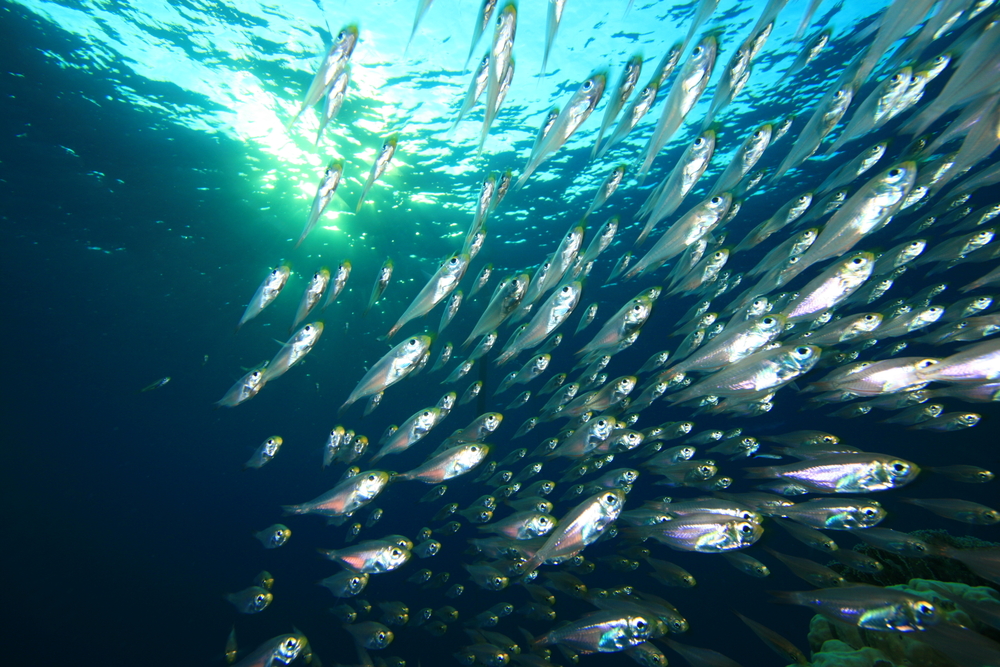
06 Jun Help Save Our Oceans – The Sustainable Seafood Guide
We have always had a relationship with the ocean that goes deep. It’s more than just a resource for valuable food such as fish and seaweed and a vast watery highway we use to connect us across the continents. It’s teeming with an amazing array of creatures and a deeper mystery that tugs at something deeper in us. From taking a tumble in the ocean, surfing, or walking on a beach, to those cultures who go to the ocean to celebrate important festivals such as new year’s, there is something uplifting and sacred about it, something we don’t really have words for.
It can seem so vast that many of us humans seem to have forgotten that it’s not an endless resource that we can keep draining without a thought. That its vibrant life requires us to participate in respecting and protecting it in order for us to have anything of its magic and bounty left to share with future generations.
Seafood has become increasingly popular as we seek out those lean meats, healthy omegas and nourishing sea veggies in our quest to improve our health and lead a quality life, and the world populations keeps expanding. Ocean resources have become incredibly strained, with many resources already being overfished and practically depleted, as greedy, unsustainable and short sighted fishing practises are pursued across the globe. Fish stocks are not getting a chance to recover. Line fish that are caught closer to shore, or even marine species such as perlemoen which are poached, or turtles who need to come ashore to breed, have suffered badly. All these beautiful sea creatures need safe spaces to breed and Marine Protected Areas (MPA’s) where there are ‘no take’ zones are few and far between.
And it’s not just about what seafood we eat and how we fish. Unchecked pollution and plastic form in massive floating islands of rubbish – our modern gift to the sea. This toxic pollution gets into the seafood we eat, as well as disrupts natural eco-systems such as plankton and algae, which in fact play a major role in producing oxygen for us to breathe – it’s estimated that marine plants produce between 70 to 80 percent of the oxygen in the atmosphere! As we disrupt the delicate balance in the oceans’ ecosystem we cause a knock on effect that deprives all sea creatures of their ability to survive, or even dare we say, flourish as they should, including ourselves.
This may sound overwhelming and a little depressing… but, you have more power than you realise.
Take Action
The SASSI Sustainable Seafood Guide
You can make a difference with the choices that you make. The South African Sustainable Seafood Initiative (SASSI) has created a simple and effective way to help you start making more ocean-friendly choices when you buy seafood. They have published a little wallet-sized pamphlet you can refer to with fish species colour coded into red (don’t buy), orange (think twice) and green categories (best choice).
You can also text the name of the species to 079 499 8795 and receive an instant response as to the status of the fish you want to buy (standard sms rates apply), or download the SASSI app. Armed with this information, you’ll also be in a position to speak to shops and restaurants, give them a rap on the knuckles if you find them selling endangered sealife!
Labels to look out for:
 |
 |
| ASC (Aquaculture Stewardship Council) | MSC (Marine Stewardship Council ) |
These are eco-labels that indicate sustainable and traceable seafood.
Share you stories and express yourself about this vital issue at Sassi’s website.
And remember to always ask four simple questions about your seafood to find out its sustainability status:
- What is it called?
- Where is from?
- How was it caught or farmed?
- If it’s not on the green list, why are you selling or serving it?
It may seem like a small start, but the more people do this, the bigger the wave will become. You have a choice to make it green.




No Comments